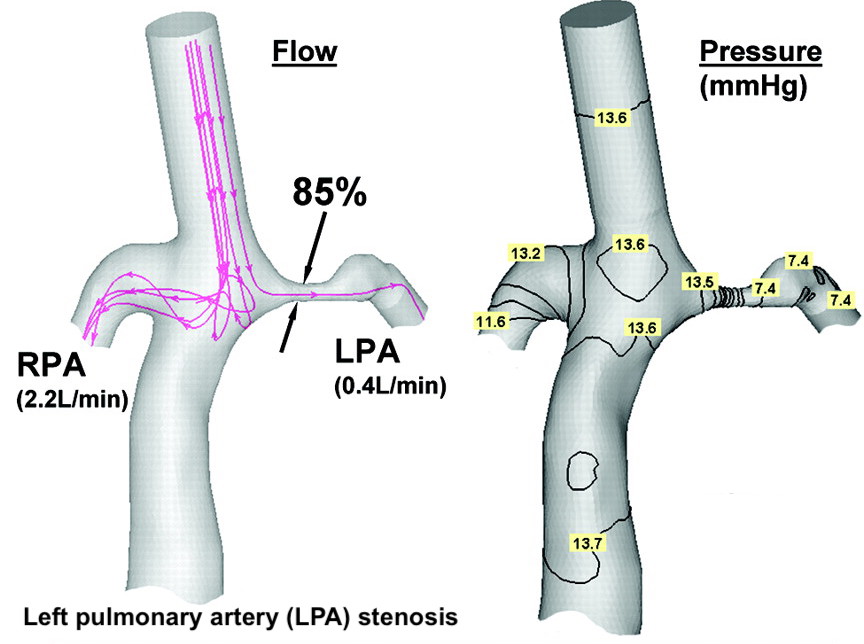Background

Modified from Pekkan et al., 2005 (doi:10.1161/CIRCULATIONAHA.104.530931)
- Congenital heart defects affect nearly 1% of―or about 40,000―births per year in the United States.1 Pulmonary artery stenosis, the narrowing of the pulmonary artery, occurs in 7-10% of congenital heart defects and can occur in isolations or in relation to other conditions2
- Children suffering from pulmonary artery stenosis are currently treated using stents that are able to be re-expanded through additional surgical procedures, specifically balloon-angioplasty, a type of balloon expansion of stents via a catheter.3
- Pediatric patients are most susceptible to surgical risks and complications associated with re-expansion surgeries as they may need to undergo up to 7 throughout their development4
[1] Hoffman J.L, S. Kaplan. The incidence of congenital heart disease. J Am Coll Cardiol. 39(12):1890-1900, 2002
[2] Rosenbaum M. Q&A: Pulmonary Stenosis. Adult Congenital Heart Association. (https://www.achaheart.org/your-heart/health-information/pulmonary-stenosis)
[3 ] Ewert, P., Riesenkampff, E., Neuss, M., Kretschmar, O., Nagdyman, N., & Lange, P. E. (2004). Novel growth stent for the permanent treatment of vessel stenosis in growing children: an experimental study. Catheterization and cardiovascular interventions, 62(4), 506-510.
[4] Danon, S., R. G. Gray, M. A. Crystal, G. Morgan, D. H. Gruenstein, B. H. Goldstein, and B. M. Gordon. Expansion Characteristics of Stents Used in Congenital Heart. 741–750, 2016.
